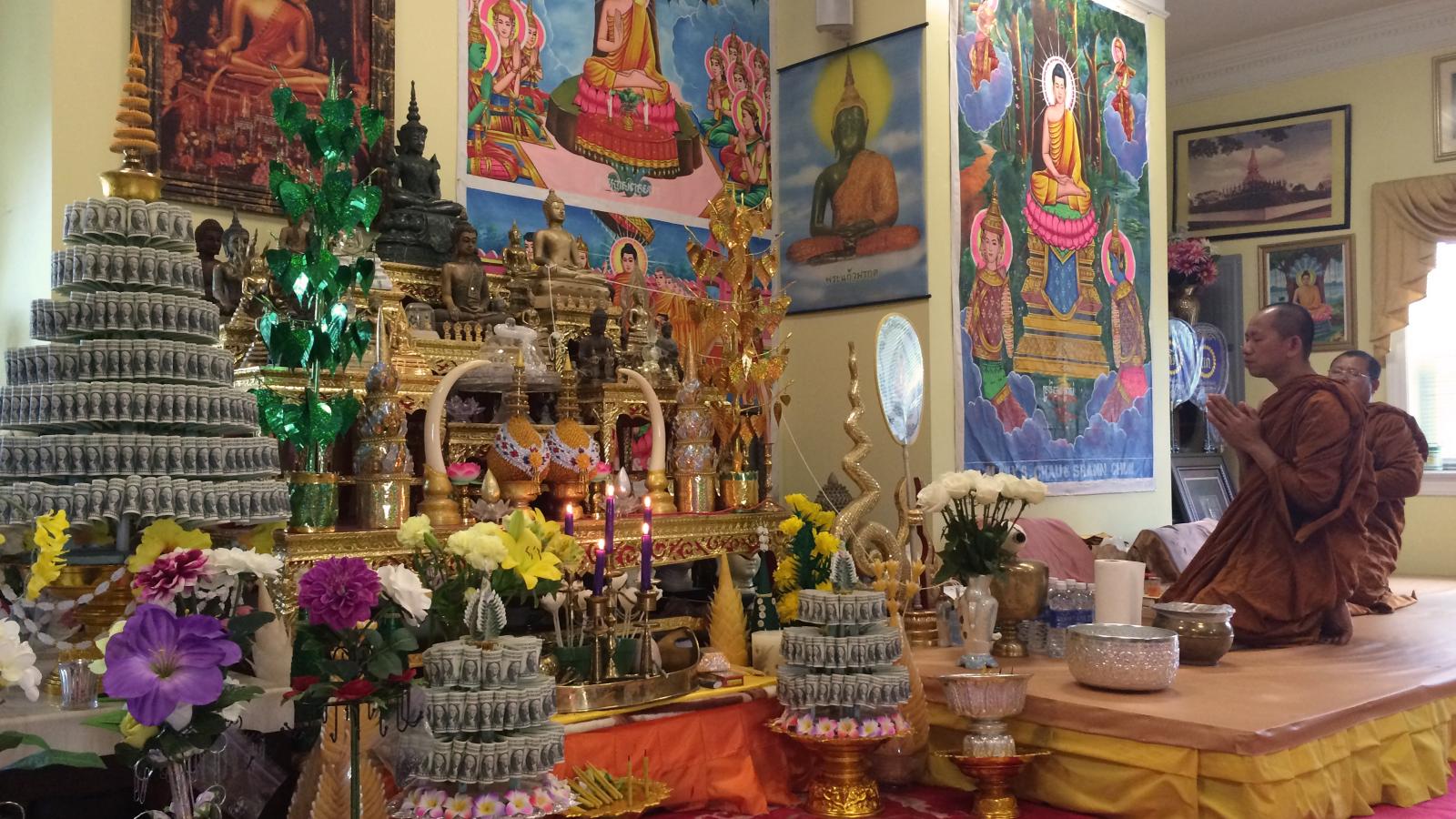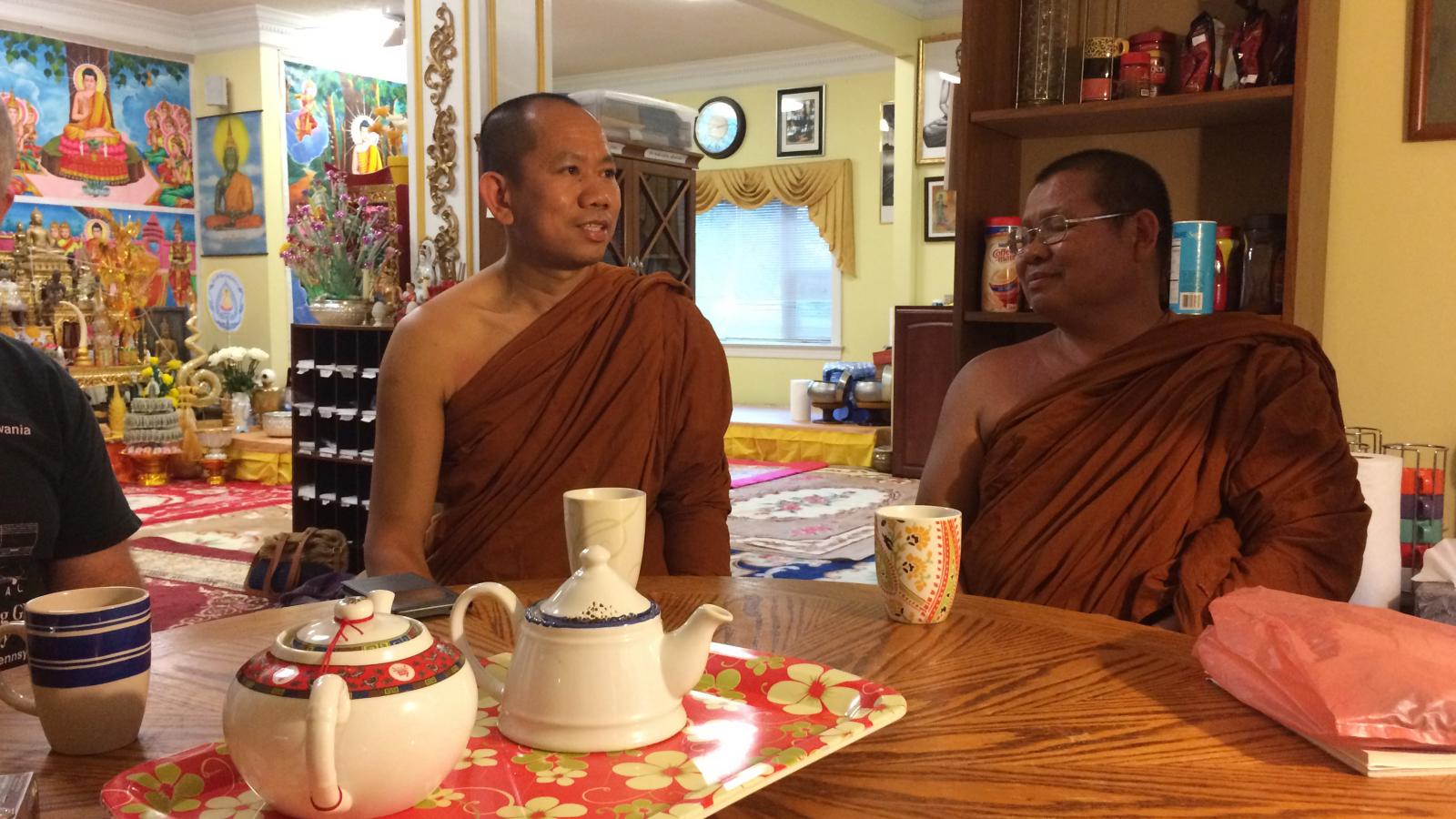“In the beginning when you learn to practice it’s best to practice in silent where there’s less distraction. It’s not just auditory or sound but also visual you want to eliminate all the distraction; things that could distract you from your practice. As you develop further in your practice you can also develop ways to practice when there are distractions around. But to get to that point you have to be further along in your practice and you have to develop a lot of wisdoms, knowledge, and understanding to prevent those distractions from affecting your practice. So once you gain certain level of proficiency in your practice the noise, sounds, and visual distractions will not detract you from your practice.”
The Wat Buddha Samakidham Temple in Columbus, Ohio is nestled into an area of small farms and residential neighborhoods between I-270 and Route 33. The sounds of a busy highway hum in the background of the converted 4-acre farm. Three main buildings make up the temple grounds: a farmhouse, converted equipment hanger and barn. There are currently two monks in residence at the temple site, but this number fluctuates throughout the year. The grounds are staked out with five-colored dharma (Pali dhamma) flags and sprinkled with colorful statues of dragons and tigers, as well as refurbished tires made into flower planters.
(Recording of evening chanting, silent meditation, and interview)
On Wednesday evenings, the monks perform their evening prayers and meditation in the farmhouse in the company of a few Western guests. Approximately 15 minutes of chanting is followed by 20 minutes of silent meditation. These moments of chant melody and silence are punctuated by the noises of doors opening and closing, the wind and ambient noise of cars from the nearby road and the intermittent chirps produced by a digitized cuckoo clock. A few brief prayers close out the session and then the monks take time to chat with community members. The chanting is performed in Pali language and consists of praises for the Buddha, as well as dedications of merit. The discussion sessions are meant to introduce Theravada Buddhism to Columbus, as well as to help the monks improve their English.
“Everything that [the monks] do is to enhance and improve their meditation. During the chanting the mind is more concentrated on the words that they have to utter. And for people who listen the chanting helps keep people’s minds together with the chanting; with the enunciation, the words, and the sound. So it helps guide the mind during the chanting, so when they practice meditation after the chanting hopefully the beginning part of the chanting helps guide the mind.”
On Sunday mornings, members of Columbus’ Thai and Lao community gather together for prayer, offerings and a meal. Approximately 50 people gather on a weekly basis, but many more visit the temple during holidays and festivals. During the Sunday event, the chanted prayers are led by the monks themselves, as well as by a lay chant leader. Members of the audience chant along, and a large gong is utilized to delineate sections of the prayer. During the course of the morning, members of the congregation make offerings of fruit, vegetables, rice, candies, cookies and money to the monks. Before the community begins their meal, a portion of every dish is placed in the monks’ begging bowls and they are given the opportunity to eat while the chant leader and congregation continue their prayers. The event concludes with a community potluck meal and time for socializing among the families.
(Recording of local Tai and Laotian community at Sunday service)
This site represents a complex commingling of American agricultural architecture and Thai and Lao Buddhist symbolism. Its location within the city places it right on the border between the urban poverty of Columbus’ South Side and the pastoral grasslands of America's imaginative Mid-West. Traveling along Refugee Road to access the temple, one is acutely aware of the complex web of diasporic and refugee communities coexisting in Columbus. As these particular Thai monks learn English, refurbish their property and recycle objects into new forms of devotional art, the landscape of Columbus cannot help but be shaped by their work. Similarly, the encroaching sounds of the freeway behind the temple are tempered and reimagined by the acoustic work of dozens of Buddhist practitioners carving out space in the densely packed auditory arena of Columbus.
3296 Watkins Rd, Columbus, OH 43207
Monk: Ajanh (Teacher) Sun Palee
Monk: Ajanh (Teacher) Thong Dee
Translator: Peeya Iwagoshi
Field Researchers:
- Kati Fitzgerald
- Dan Jian
- Ada Matusiewicz
- Austin Mayabb








